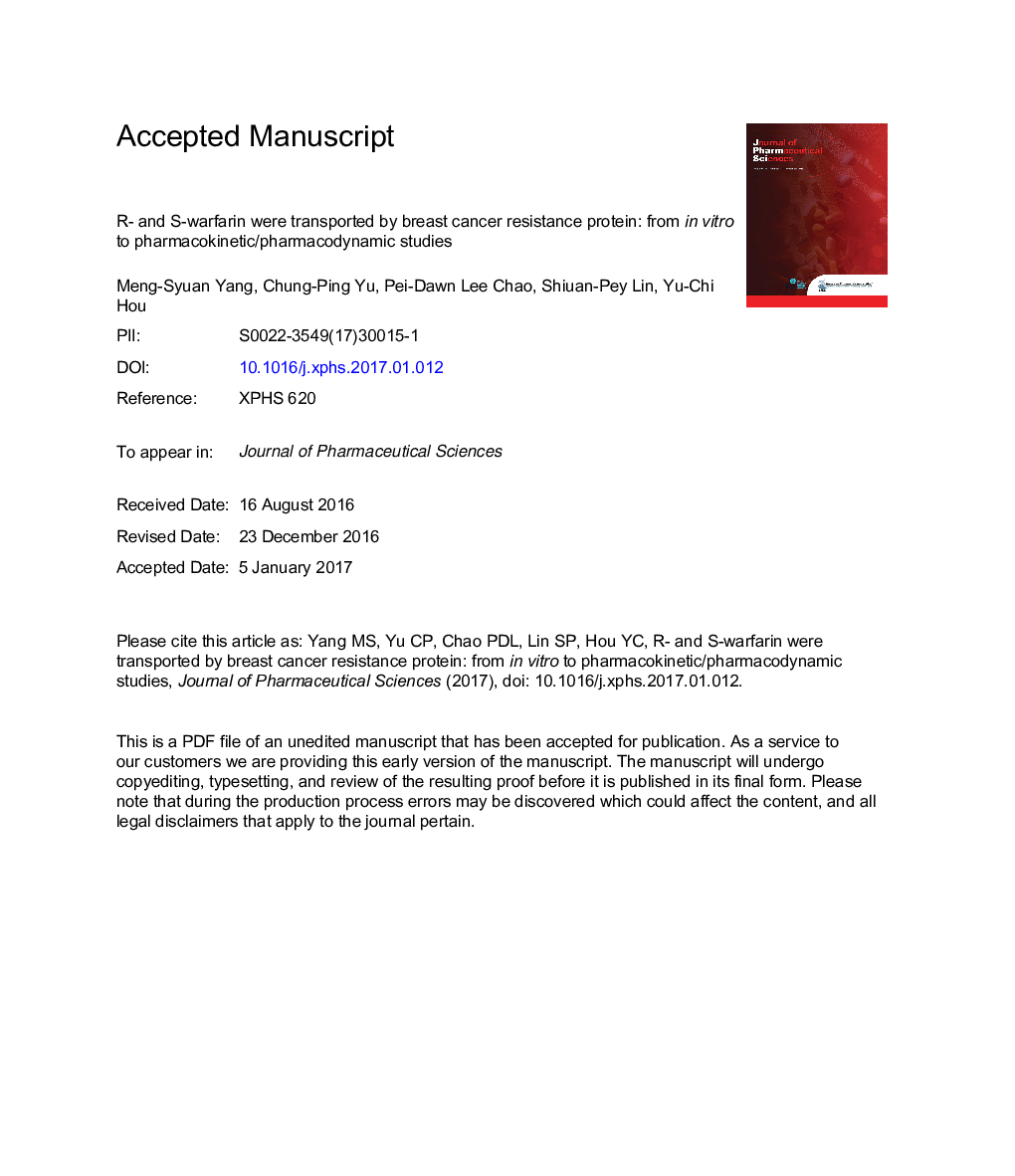| Article ID | Journal | Published Year | Pages | File Type |
|---|---|---|---|---|
| 8514334 | Journal of Pharmaceutical Sciences | 2017 | 35 Pages |
Abstract
Warfarin, a racemate of R- and S-warfarin, is an important oral anticoagulant with narrow therapeutic window. Being an acidic drug, warfarin (pKa = 4.94) exists mainly as anion under physiological pH. We hypothesized that the transport of warfarin anion across cell membrane was mediated by breast cancer resistance protein (BCRP), an efflux transporter having a variety of acidic substrates. This study aimed at verifying that warfarin was a substrate of BCRP. Cell lines and mice were used for transport assay and pharmacokinetic-pharmacodynamic studies, respectively. The concentrations of R- and S-warfarin were simultaneously determined by liquid chromatography-mass spectrometry method. Transport assay showed that the intracellular concentrations of R- and S-warfarin in MDCKII-BCRP were significantly lower than those in MDCKII. In addition, Ko143, a potent BCRP inhibitor, significantly inhibited the efflux transport of R- and S-warfarin in MDCKII-BCRP, but not in MDCKII. Pharmacokinetic study showed that the plasma concentrations of R- and S-warfarin in Bcrp-/- mice were significantly higher than those in wild-type mice at 6 h after dosing. Anticoagulation measurement showed that the international normalized ratio in Bcrp-/- mice was significantly higher than that in wild-type mice at 24 h after dosing. In conclusion, R- and S-warfarin were transported by BCRP.
Keywords
Cytochromes P450MDCKIICYP450INRBcrpABCG2HBSSLC-MSPBSMTTLOD یا Limit of detectionDrug transportABC transportersLiquid chromatography-mass spectrometryMass spectrometryPharmacokinetics/pharmacodynamicsPreclinical pharmacokineticslimit of detectionHank’s buffered salt solutionPhosphate-buffered salineInternational Normalized Ratiobreast cancer resistance protein
Related Topics
Health Sciences
Pharmacology, Toxicology and Pharmaceutical Science
Drug Discovery
Authors
Meng-Syuan Yang, Chung-Ping Yu, Pei-Dawn Lee Chao, Shiuan-Pey Lin, Yu-Chi Hou,
